The Giant Virus in the Room: Corporate Vaccine Makers Need More Pandemics, to Grow

NEWS JUNKIE POST
May 21, 2020 at 11:09 am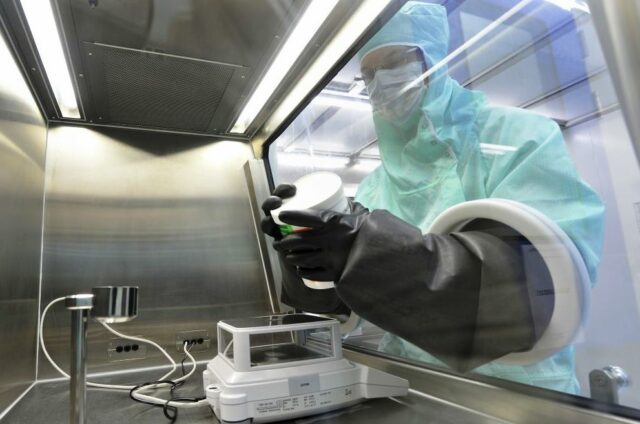
As drug makers prepare to make a killing on supposed vaccines against COVID-19, it is important, particularly for those who consider vaccines to be a wise investment today, or those whose retirement savings might get invested in such vaccines without their knowledge, to reflect on the fact that corporations are themselves viruses that can only make money for their investors by growing. The way they will grow is by making more vaccines for yet more pandemics. The new pandemics might come of their own accord, or they might get a little nudge.
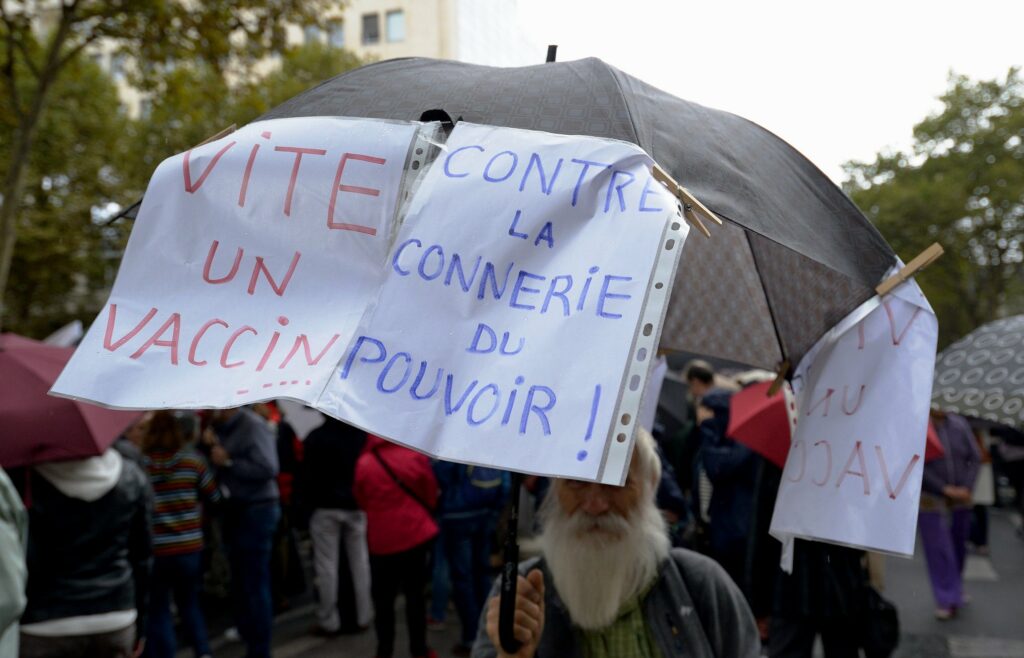
A road map from those in the shadows
The public has lately been assaulted with relentless announcements about this or that supposed vaccine going into phase 1 or 2 clinical trial and the promise that vaccines — if we would only let enough different ones get developed sufficiently rapidly and without oversight — will free us from masks and social distancing. According to an American Enterprise Institute “road map” by people that include former FDA commissioners Scott Gottlieb and Mark McClellan, social distancing restrictions will only be lifted when tools to mitigate the risk of disease – including a vaccine — become available. There you have it. If you should ever want to stop cowering with a mask on your face, shake hands with a new acquaintance, dance with friends and strangers, blow a kiss or flirt more outrageously with somebody, you’ll need to get a vaccination license. The people who have mandated this aren’t even currently in government. They are private individuals who have retreated to think tanks from which to issue their decrees.

The global threat to health isn’t a coronavirus
The public health departments of cities, states, or countries have not been those to call for vaccines. Instead, global public health appears to have been hijacked by a supposed non-profit foundation called the Coalition for Epidemic Preparedness Innovation (CEPI), with the Orwellian motto, “New vaccines for a safer world.” One might well ask: “safer for whom?” CEPI was hatched in a one-hour discussion on the sidelines of Davos 2016 between Bill Gates, Wellcome Trust Foundation Director Jeremy Farrar, the CEOs of six major vaccine manufacturers (Glaxo Smith Kline, Merck, Johnson & Johnson, Sanofi, Takeda, and Pfizer), the Prime Minister of Norway, and supposedly 15 other individuals.
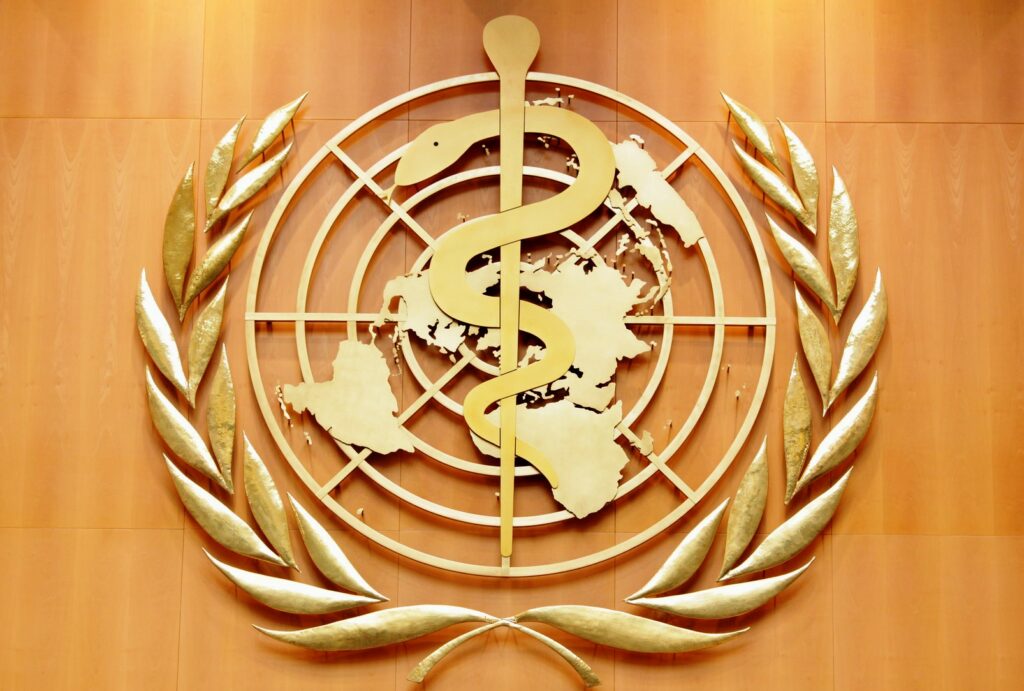
Representatives of Germany, India, and Japan are supposed to have attended that meeting, although Prime Minister Angela Merkel had declined the invitation that year, Indian Prime Minister Narendra Modi was not there, nor was any Japanese head of state. The goal of this cabal, in which elected heads of states are obviously subordinate to Bill Gates and Big Pharma, is not merely to make vaccines and lots of money, but also to deregulate vaccine manufacture on a global scale and control the world by controlling global public health. In this scenario, the United Nations’ WHO, which receives 75 percent of its funds from big pharmaceutical companies and the Bill & Melinda Gates Foundation, is merely the arm of CEPI that will tie vaccine adoption by developing countries to various kinds of Western aid. The WHO Director General, Tedros Adhanon, began to enjoy the Gates Foundation’s generosity when he was a Minister of Health in Ethiopia who embraced the foundation’s agenda. The WHO Assistant Director General, Bruce Aylward, who may be the real power in the organization, previously worked for Gates’ supposed polio eradication program. Make no mistake: CEPI intends to be to global health what the WTO is to global trade.
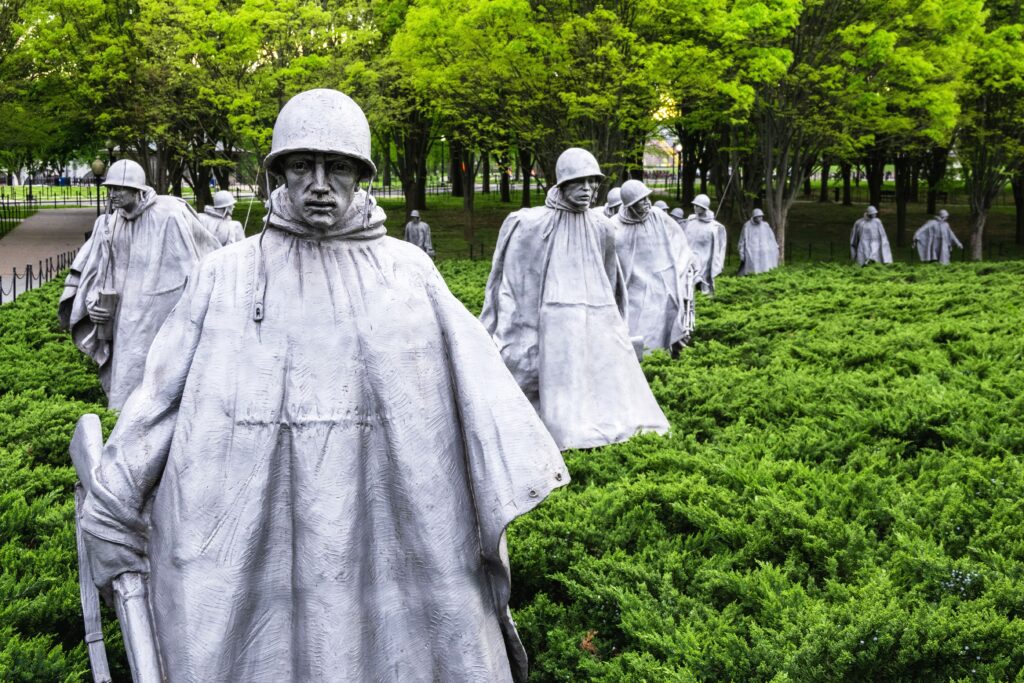
The agenda is military, and it is global
CEPI has already raised over $750 million: a sum that commands a lot of influence. It is well entwined with the militaries of various countries. For example CEPI’s CEO, Richard Hatchett, was the Director for Biodefense Policy on the White House Homeland Security Council in 2005-2006, Associate Director for Radiation Countermeasures Research and Emergency Preparedness at NIAID in 2005-2011; and Chief Medical Officer and Deputy Director of the Biomedical Advanced Research and Development Authority (BARDA) in 2011-2016. BARDA is a division of the Office of the Assistant Secretary for Preparedness and Response. Several CEPI-financed vaccine projects enjoy support from BARDA, the U.S. Department of Defense Advanced Research Projects Agency (DARPA), or the U.S. Military HIV Research Program.
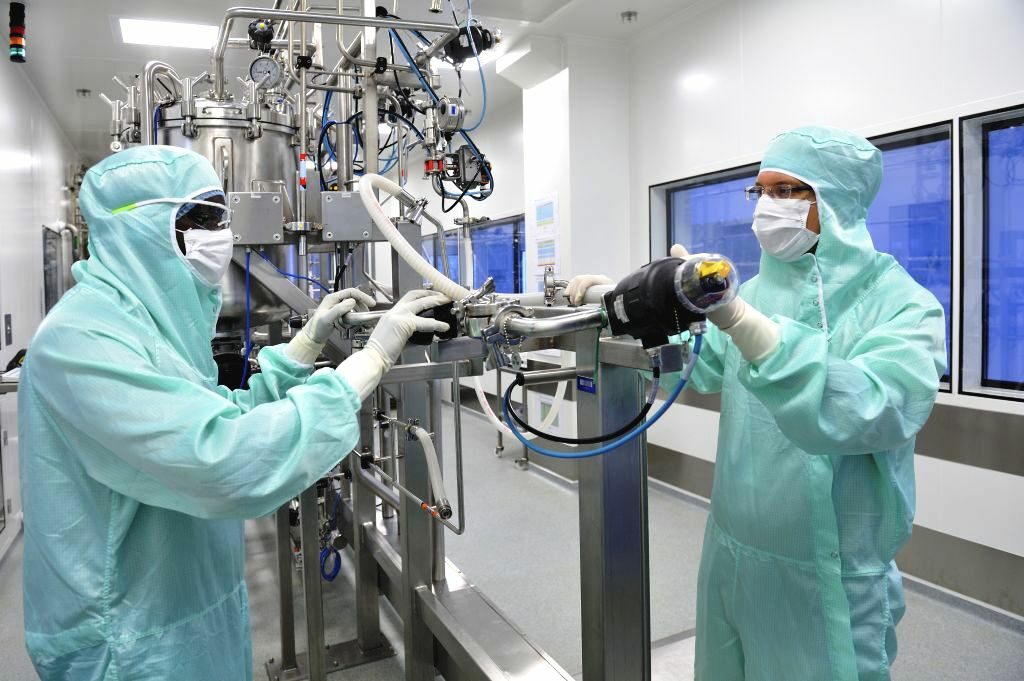
In January 2020, CEPI announced that it would finance three consortiums to develop vaccines against COVID-19. Its alliance with these consortiums, however, predates this announcement in several cases. For example, as far back as April 2018, CEPI provided $56 million to a company called Inovio to get vaccine candidates against the SARS-Cov-2 relative, MERS-CoV, to phase 2 trials; Inovio’s main collaborator is the Chinese company, Beijing Advaccine Technology. In January 2019, CEPI provided $10.6 million to a consortium involving the University of Queensland and public/private sector partners in Australia, the US, and Asia to develop a new approach called “molecular clamp” for designing vaccines. In December 2019, CEPI gave $8.4 million to Imperial College London, UK, to test an RNA vaccine in animals and also get it to phase 2 trials. The researchers at Imperial College boast about the fact that they began to test their vaccine against SARS-CoV-2 in animals in February 2020! Recall that the SARS-CoV-2 genome sequence only became known on January 10, 2020. In this context, it is also interesting that Imperial College is the home of the fear mongering and disgraced Neil Ferguson, with the too pretty and too married social merging mistress.

The FDA’s vaccine fast track
The road to FDA approval has been smoothed for CEPI’s partners and, unsurprisingly, they have been first to move their putative vaccines to clinical trials. As a rule, the FDA has put the projects of CEPI’s pet companies on a “fast-track” designation, which allows them to be green-lighted to the next phase before they have even completed the preceding one. Consider for example the biotechnology company, Moderna. It has received an undefined sum from CEPI, plus around $483 million from BARDA, as well as funds from DARPA. The appeal of this company to pencil and paper want-to-be-scientists, like Bill Gates and various military types, is that its approach, or “platform,” for vaccine manufacturing could potentially be used to make many other vaccines. But this approach is also potentially dangerous, because it involves the introduction of viral mRNA into cells, and this alone might start an adverse immune reaction. The viral mRNA is then supposed to direct production of the SARS-CoV-2 spike protein on the surface of the vaccinated person’s cells for some undefined period of time. This kind of vaccine was not even tested in animals before Moderna was allowed to begin its phase 1 trial in mid-March with 45 healthy human volunteers. Even more extraordinary, six weeks later the company filed for permission to go on to a phase 2 trial with 600 volunteers. Its application was approved, even though the phase 1 trial requires months of follow up that are not yet done. The company’s stock has skyrocketed as it has made one promise after another of accelerated schedules and massive scale up of its vaccine production.
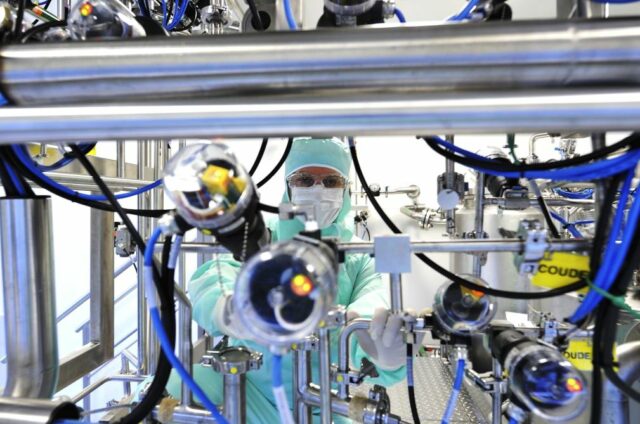
Inovio is on a similar trajectory. The phase 1 trials on its putative SARS-CoV-2 vaccine started on April 3. The company is injecting people with milligram amounts of DNA and then zapping them with a proprietary device, to get the DNA into their cells. It has not defined how the DNA carrying the spike protein information will be guided to the nucleus. If the DNA stays elsewhere in the cells, where it does not belong, it might be mistaken for a virus and start an adverse immune response. If it goes to the nucleus, it may integrate into the cells’ DNA in random places, potentially causing cancers.

The mainstream takes dictation
The mainstream media, which is as lazy as it is scientifically illiterate, has contented itself with the republication of gee-whiz, oh-wow press releases, and the publication of reports sometimes explicitly written by the vaccine manufacturers or their partner foundations. Such reports also appear, not as full-length peer-reviewed articles, but as short commentaries in the summary and editorial pages of serious science journals like Science and Nature. The association of those planted reports with prestigious journals gives them, not only a veneer of credibility but also an automatic amplification by popular science magazines. The reports have generally focused on the marvelous promise of the supposed vaccines and their inevitable manufacture in massive quantities. In fact, 18 years after the original SARS-CoV, which is the closest relative of the COVID-19 agent, no vaccine has successfully been developed against that virus, and many of these so-called new vaccine efforts are actually recycled failed SARS-CoV or MERS-CoV projects.

The real state of knowledge about the immune system
What the news media do not say, and probably could not say with any confidence, is that the mammalian immune system is still poorly understood. Had most media people attended a BIO101 class, there would be great skepticism in the news about the sudden proliferation of newfangled potential vaccines and the massive human experiment being organized to test them.
The following is a quote from a scholarly review published in Nature Immunology in December 2014:
“The only currently licensed and generally available vaccines against respiratory viruses are for influenza virus, and even these are suboptimal. The paucity of vaccines is due in part to the only limited understanding of immune responses that can provide protection against respiratory viral infection: in many cases, even fundamental correlates of protection have yet to be accurately defined, and the most appropriate antigens to which vaccines should be targeted remain unknown. Animal models are generally imperfect guides to human disease, and the populations at highest risk of severe infections (i.e., young children and elderly adults) are the most difficult to study. In addition, vaccines are often less effective in those with immature or senescent immune systems.”
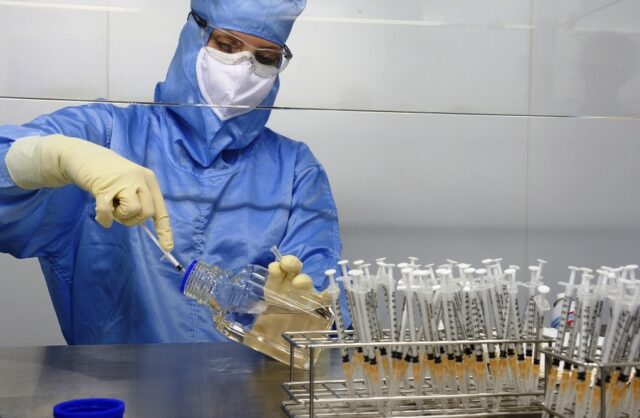
The next quote is from a commentary on a peer-reviewed article published on May 13, 2020 in Nature 581: 316.
“This discovery elevates TASL to membership of an exclusive circle of… adaptor proteins… of which the other members are TRIF, MAVS, and STING. These four proteins together control the type I interferon response induced by nucleic-acid sensing, a picture that has now been completed with the discovery of TASL as the missing… adaptor of TLR7, TLR8 and TLR9 signaling.”

My translation: only this week, one of the four major players in the early human immune response was discovered! It is a newly characterized protein called TASL that becomes activated when an infected cell senses the presence of genetic material from a virus in a cellular compartment where it should not be. This helps to explain an important part of the immune response that until now has baffled scientists.
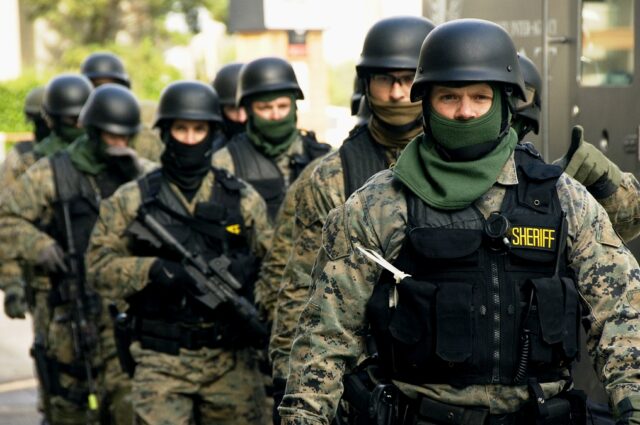
The early fight against an infection: a situation that can escalate
A reasonable analogy to a viral infection might be a Columbine-like threat, where a band of murderous fascists take over a high school. Let us say, for good measure, that this particular group wears a specific and recognizable kind of uniform and tattoo. The high school itself is automatically set up to detect the invasion and to call 911. Cells in the lung do the equivalent with proteins called Toll Like Receptors (TLR). These proteins sound the alarm when they recognize genetic material, like DNA or viral RNA, in compartments outside of the nucleus, where it is not supposed to be: a situation that indicates presence of a pathogen. In the cells, some of these compartments are called endosomes or endolysosomes. In our high school, the first responders would be the local police. In the lungs, which do contain their own local immune cells, this would be called the interferon or antiviral response. If this response is successful, as it often is in healthy people, nothing more needs to be done: end of story.
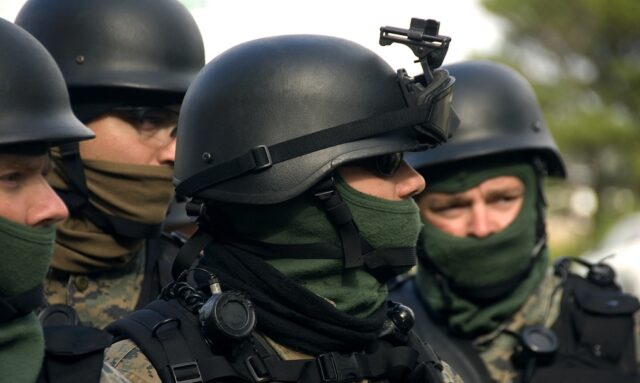
But suppose some of the fascists manage to evade the police and take over several other schools in the same area. The police might then call in SWAT teams with snipers, machine guns, and tear gas grenades; or even police units with bomb robots. The innate, or local, immune system has the equivalent of all of these. It involves SOS signals to the adaptor proteins noted in the above quotation, and the permission from each one for the next step in the escalation. The bomb robots in this case, would be analogous to an inflammation response that destroys not only the viruses but also much of the lung. Obviously, you would want to exhaust every option before using bomb robots in schools that have a few crazies and a lot of students. But suppose the crazies manage to block the police communication to the SWAT teams, then what do you do? Coronaviruses, including the agent of COVID-19, i.e. SARS-CoV-2, can achieve an analogous block of communication during exceptionally heavy initial infections, or infections of the elderly and people with other medical conditions like diabetes, respiratory problems, or cardiovascular disease. What I have just described, with a minimum of immunology jargon, is called the initial innate immune response. In this context, innate means local, i.e. in the lungs.

Vaccines are not the answer
The serum antibodies we all know about are produced as part of a later response, called the adaptive immune response. It happens in those who manage to keep intact and functional a sophisticated route of communication during the attack. The resulting counterattack is not only broad but also specifically tailored to neutralize the invading virus. Furthermore, we maintain a memory of the response. This would be the equivalent of an FBI database with detailed descriptions of the crazies and their tattoos so that they might immediately be recognized, should they appear again in months to years. The only problem is: they can change uniforms and tattoos. All vaccines are based on inducing this later response, which is supposed to prime an individual to resist an attack. But vaccines, however sophisticated the supposed approach or platform, are almost always designed to recognize only a single feature of the invading pathogen. As if one learns to recognize a tattoo on a fascist and nothing more. But suppose the tattoo is removed or changed? In the case of SARS-CoV-2, the target is the spike protein, or sometimes a piece of it. It so happens that the spike protein is also the most variable part of the virus.

Antibody-Dependent Enhancement of disease: A bon entendeur, salut!
A massive human experiment is underway to test potential vaccines. Nearly everything that can be put into a human will be injected into those volunteers who are more terrified of COVID-19 than the vaccine makers or the military. Their menu will include: the inactivated SARS-CoV-2; mutated, or attenuated, versions of SARS-CoV-2 (intra-nasally); SARS-CoV-2’s spike protein; pieces of the spike protein, large and small; harmless bacteria that have been redesigned to make the spike protein; harmless viruses that have been redesigned to make the spike protein; virus-like particles that can present the spike protein on their surface; circular DNA that codes for the spike protein; linear DNA that codes for the spike protein or part of it; mRNA that codes for the spike protein; modified mRNAs; and even an RNA that codes for the spike protein as well as another protein that will make more of the RNA and spike protein, ad infinitum. As a rule, the manufacturers have not even disclosed which exact version of the spike protein they plan to use for the vaccination attempts. Indeed, some companies have disclosed nothing but their intent to conduct clinical trials.

One possible result of attempted vaccinations against SARS-CoV-2 that should give anyone pause is an Antibody-Dependent Enhancement (ADE) of disease. In other words, it is possible that attempted vaccinations might prime a previously healthy person for a life-threatening inflammation response on the next encounter with a coronavirus. So far, the only company that reports even having checked for ADE is Sinovac Biotech, a Chinese company that is collaborating with a US partner on an inactivated SARS-CoV-2 vaccine. The phenomenon of ADE is well established as a possible outcome of attempted vaccination against viruses. A famous instance was a late 1960s vaccine trial in children using inactivated Respiratory Syncytial Virus (RSV), which resulted, not only in a failure to protect but also in 2 deaths, and a severe respiratory disease in 80 percent of the children that required hospitalization on their subsequent exposure to the virus. ADE has been observed in mice and other animals supposedly immunized against SARS-CoV with an inactivated virus. Recall that SARS-CoV is the closest relative of SARS-CoV-2. Therefore, compared to the supposedly vaccinated people, it is highly possible that the unvaccinated or never previously exposed individuals will fare better in a subsequent coronavirus outbreak.
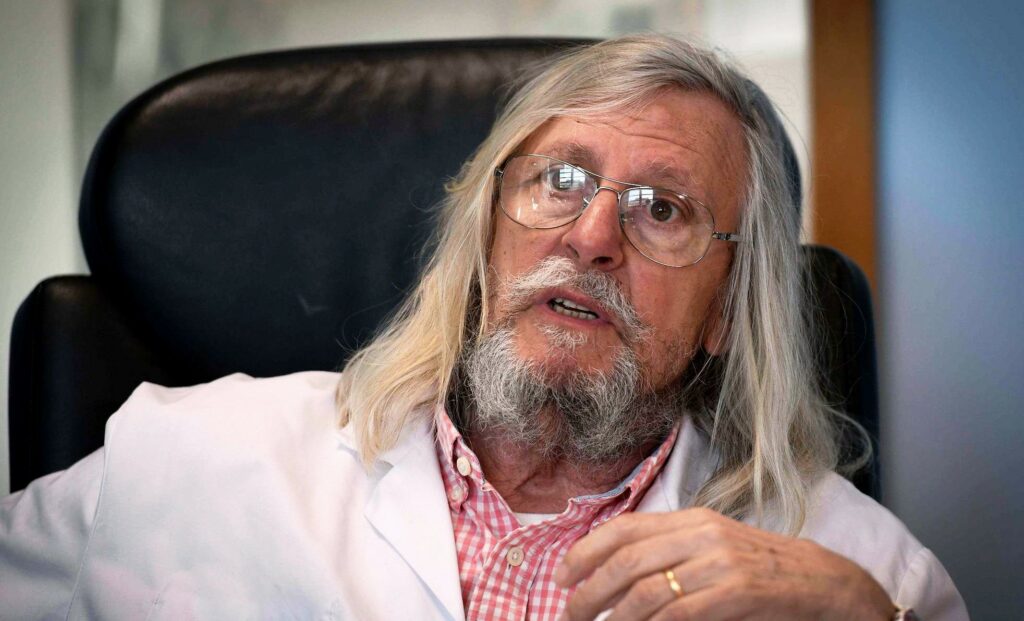
Hydroxychloroquine bites back
The new adaptor protein, called TASL, described for the first time this week, was discovered to bind to another protein called Solute Carrier 15A4 (SLC15A4). SLC15A4 has long been known to be necessary for lupus and other autoimmune diseases. Now we know that the reason for this is probably because the TASL-SLC15A4 interaction is the path that leads to inflammation. Remember the robot-bomb option in the previous section? That’s the one! As it happens, the reason hydroxychoroquine (HCQ) has worked for decades against lupus disease is because HCQ is known to interfere with inflammation, but the details were unknown. SLC15A4 is also important for maintaining the acidity of the endosome, which HCQ is known to de-acidify to some degree. The antibiotic azithromycin has also been reported to reduce the acidity of endosomes, thus compounding this effect of HCQ. As a result, when the virus goes to the endosome to develop, it finds that this compartment is insufficiently acidic; it gets stuck there and is ultimately destroyed. So hydroxychloroquine, an inexpensive and long-used drug, counters coronavirus infections in two crucial and quite general ways: it damages the virus and also keeps the immune response from going dangerously overboard. Given the connection of SLC15A4 to lupus disease, it is astonishing that the authors of the new paper did not test HCQ’s effect on their system containing TASL. But much is open to revision when one wants to publish in Nature. That piece of the puzzle will surely materialize. But timing is everything, and it’s no wonder that the vaccine makers are in such a rush.
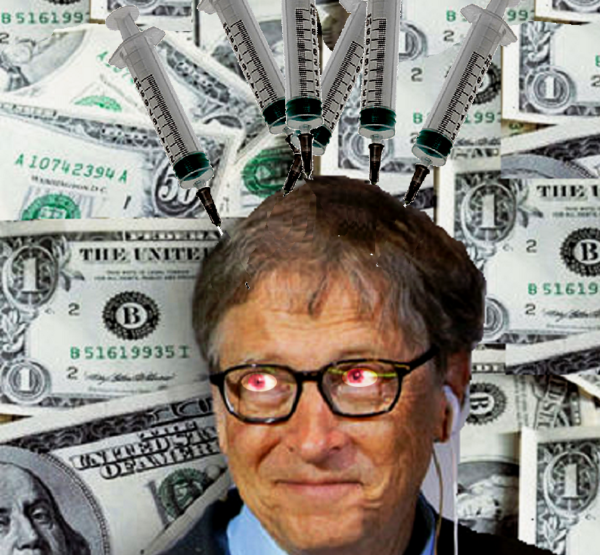
For the record
The biggest populations of human subjects for vaccine trials have in the past been brown and black children from countries like India, Bangladesh, Vietnam, Mexico, and Haiti. The scale of the current project is so massive, however, that even the citizens of Western countries must be preyed upon. In this regard, it certainly helps to keep everyone terrified. The biggest market for vaccines used to be the US Army, but that may change. Besides, a cowed and sick general public should be far more manageable, as climate change events exacerbate stressors like displacement and hunger. The greater the number of epidemics and vaccine-associated diseases, the greater the boon will be for pharmaceutical companies, and the faster they will grow. I write for the record. Those of you who participate in this enterprise or invest in it can no longer say that you did not know what was being done. The rest of you on the sidelines can still change this dystopian future, but the window of opportunity is narrowing fast.
Editor’s Notes: Dr. Dady Chery is an Associate Professor of Biology, Co-Editor-In-Chief of News Junkie Post, and the author of We Have Dared to Be Free: Haiti’s Struggle Against Occupation. Photographs one, six, eight, eleven and twelve from the archive of Sanofi-Pasteur; three, ten, fifteen and sixteen from the archive of the World Economic Forum; four from the archive of United States Mission Geneva; five and nine by Dmbosstone; thirteen and fourteen from the archive of Oregon Department of Transportation; seventeen by Duncan C.; and composite nineteen by KCW 1939.
Related Articles
- May 1, 2020 COVID-19: Questionable Coronavirus Evolution in Biosafety Level 4 Labs
- April 11, 2020 COVID-19: Killer of Black, Brown and Poor of US and Haiti
- March 19, 2020 COVID-19: Diagnostics, Hydroxychloroquine, Plasma, Short and Long-Term Solutions
- March 17, 2020 COVID-19: Background Science to Understand the Pandemic
- August 28, 2014 Ebola: Zombie Apocalypse, Biological Warfare or Marketing Hype?
- March 10, 2013 Humanitarian Imperialism: Charity for Power












You must be logged in to post a comment Login